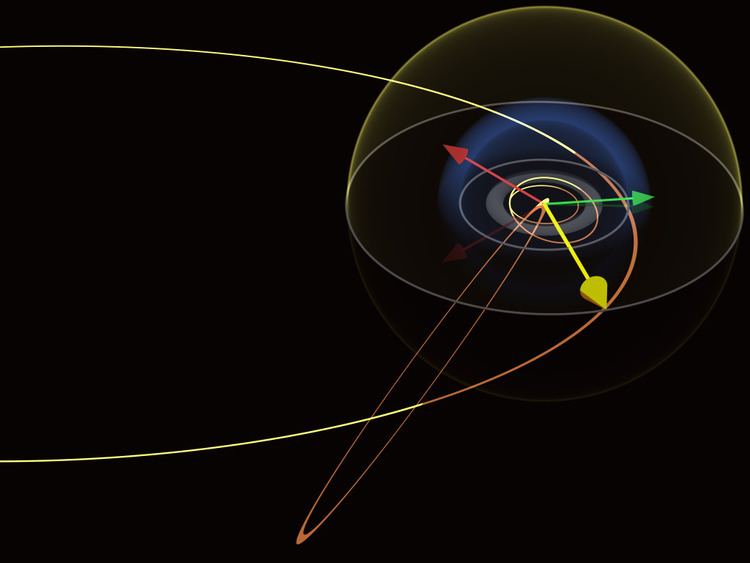imperial/US units 186282 mi | 1 light-second in ... ... is equal to ... | |
 | ||
SI units 7008299792458000000♠2.99792458×10 m astronomical units 0.0020040 AU 3.1688×10 ly 9.7156×10 pc | ||
The light-second is a unit of length useful in astronomy, telecommunications and relativistic physics. It is defined as the distance that light travels in free space in one second, and is equal to exactly 7008299792458000000♠299792458 metres (just over 7005186282000000000♠186282 miles).
Contents
Just as the second forms the basis for other units of time, the light-second can form the basis for other units of length, ranging from the light-nanosecond (just under one international foot) to the light-minute, light-hour and light-day, which are sometimes used in popular science publications. The more commonly used light-year is also presently defined to be equal to precisely 7007315576000000000♠31557600 light-seconds, since the definition of a year is based on a Julian year (not Gregorian year) of exactly 365.25 days, each of exactly 7004864000000000000♠86400 SI seconds.
Use in telecommunications
Communications signals on Earth rarely travel at precisely the speed of light in free space, but distances in fractions of a light-second are still useful for planning telecommunications networks as they indicate the minimum possible delay between sender and receiver.
Use in astronomy
The light-second is a convenient unit for measuring distances in the inner Solar System, because it corresponds very closely to the radiometric data used to determine them (the match is not exact for an Earth-based observer because of a very small correction for the effects of relativity). The value of the astronomical unit (roughly the distance from the Earth to the Sun) in light seconds is a fundamental measurement for the calculation of modern ephemerides (tables of planetary positions): it is usually quoted as "light-time for unit distance" in tables of astronomical constants, and its currently accepted value is 499.004786385(20) s.
Multiples of the light-second can be defined, although apart from the light-year they are more used in popular science publications than in research works. For example, a light-minute is 60 light-seconds and the average distance from the Earth to the Sun is 8.317 light-minutes.
